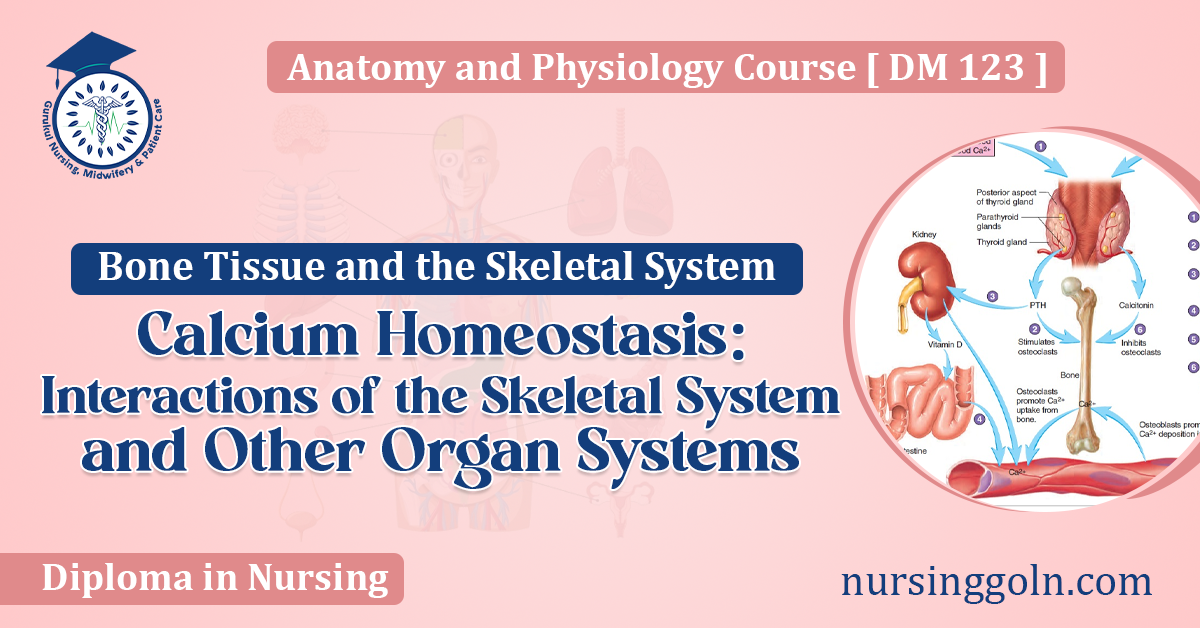Calcium is an essential mineral that plays a myriad of roles in maintaining the health and functioning of our body. From muscle contraction and nerve transmission to blood clotting and providing structural support in the skeletal system, calcium’s importance cannot be overstated. Given its critical role, the body has evolved a complex system to maintain calcium levels in a tightly controlled range known as calcium homeostasis. This article delves into how the skeletal system, in collaboration with other organ systems, ensures calcium homeostasis.
Calcium Homeostasis: Interactions of the Skeletal System and Other Organ Systems
Calcium in the Skeletal System
Over 99% of the body’s calcium is stored in bones and teeth. The skeletal system acts as a reservoir, providing calcium when needed and storing excess calcium to maintain optimal blood calcium levels. Bone is a dynamic tissue that undergoes constant remodeling – a balance of bone deposition by osteoblasts and bone resorption by osteoclasts.
- Bone Deposition: Osteoblasts secrete osteoid, a matrix that later becomes mineralized as these cells release calcium, phosphate, and other minerals into the surrounding matrix.
- Bone Resorption: Osteoclasts, on the other hand, are responsible for breaking down bone tissue. They release enzymes and acids that dissolve the bone matrix, releasing calcium into the bloodstream.
Interactions with Other Organ Systems
The balance of bone deposition and resorption is influenced by various hormonal signals, mainly stemming from the kidneys, intestines, and parathyroid glands. Let’s explore these interactions:
- Parathyroid Glands and Parathyroid Hormone (PTH):
- The parathyroid glands, located on the posterior surface of the thyroid gland, release PTH in response to low blood calcium levels.
- PTH stimulates osteoclast activity, promoting bone resorption and the release of calcium into the bloodstream.
- PTH also promotes calcium reabsorption in the kidneys, ensuring that less calcium is excreted in urine.
- Additionally, PTH stimulates the synthesis of calcitriol, an active form of Vitamin D, in the kidneys.
- Kidneys, Calcitriol, and Calcium Reabsorption:
- The kidneys filter blood and can adjust the reabsorption of calcium. When blood calcium levels are low, more calcium is reabsorbed from the filtered fluid back into the bloodstream.
- As mentioned, PTH stimulates the kidneys to convert Vitamin D into its active form, calcitriol.
- Calcitriol, in turn, enhances calcium absorption in the intestines, ensuring that more dietary calcium is taken into the body.
- Intestines and Calcium Absorption:
- Dietary calcium is absorbed in the intestines. The efficiency of this absorption is largely dictated by calcitriol.
- By upregulating proteins involved in calcium transport in the intestines, calcitriol ensures that more calcium from our diet enters the bloodstream.
- Thyroid Gland and Calcitonin:
- In response to high blood calcium levels, the thyroid gland releases calcitonin.
- Calcitonin inhibits osteoclast activity, reducing bone resorption. It also promotes calcium excretion in the kidneys.
- Overall, calcitonin acts to lower blood calcium levels.
Calcium Homeostasis Feedback Loop
The interactions of the skeletal system with the parathyroid glands, kidneys, and intestines create a feedback loop:
- When blood calcium levels drop, the parathyroid glands detect this and release PTH.
- PTH stimulates bone resorption, calcium reabsorption in the kidneys, and the synthesis of calcitriol.
- Calcitriol promotes calcium absorption in the intestines.
- As a result, blood calcium levels rise.
Conversely, when blood calcium levels are high:
- The thyroid gland releases calcitonin.
- Calcitonin inhibits bone resorption and promotes calcium excretion in the kidneys.
- Blood calcium levels drop as a result.
Implications of Disrupted Calcium Homeostasis
Calcium homeostasis is essential for various physiological processes. Disruption can lead to:
- Hypocalcemia (low blood calcium): Symptoms include muscle cramps, confusion, and numbness. Chronic hypocalcemia can lead to osteoporosis due to increased bone resorption.
- Hypercalcemia (high blood calcium): Symptoms include nausea, vomiting, kidney stones, and bone pain. Chronic hypercalcemia can lead to decreased bone density.
Conclusion
The skeletal system plays a pivotal role in calcium homeostasis, acting as a reservoir for this essential mineral. Its dynamic nature, influenced by hormonal signals from the parathyroid and thyroid glands, ensures that calcium levels in the bloodstream are maintained within a narrow range. This intricate dance, involving the skeletal system, kidneys, intestines, and endocrine glands, underscores the interconnectedness of our body’s organ systems in maintaining health and balance.
